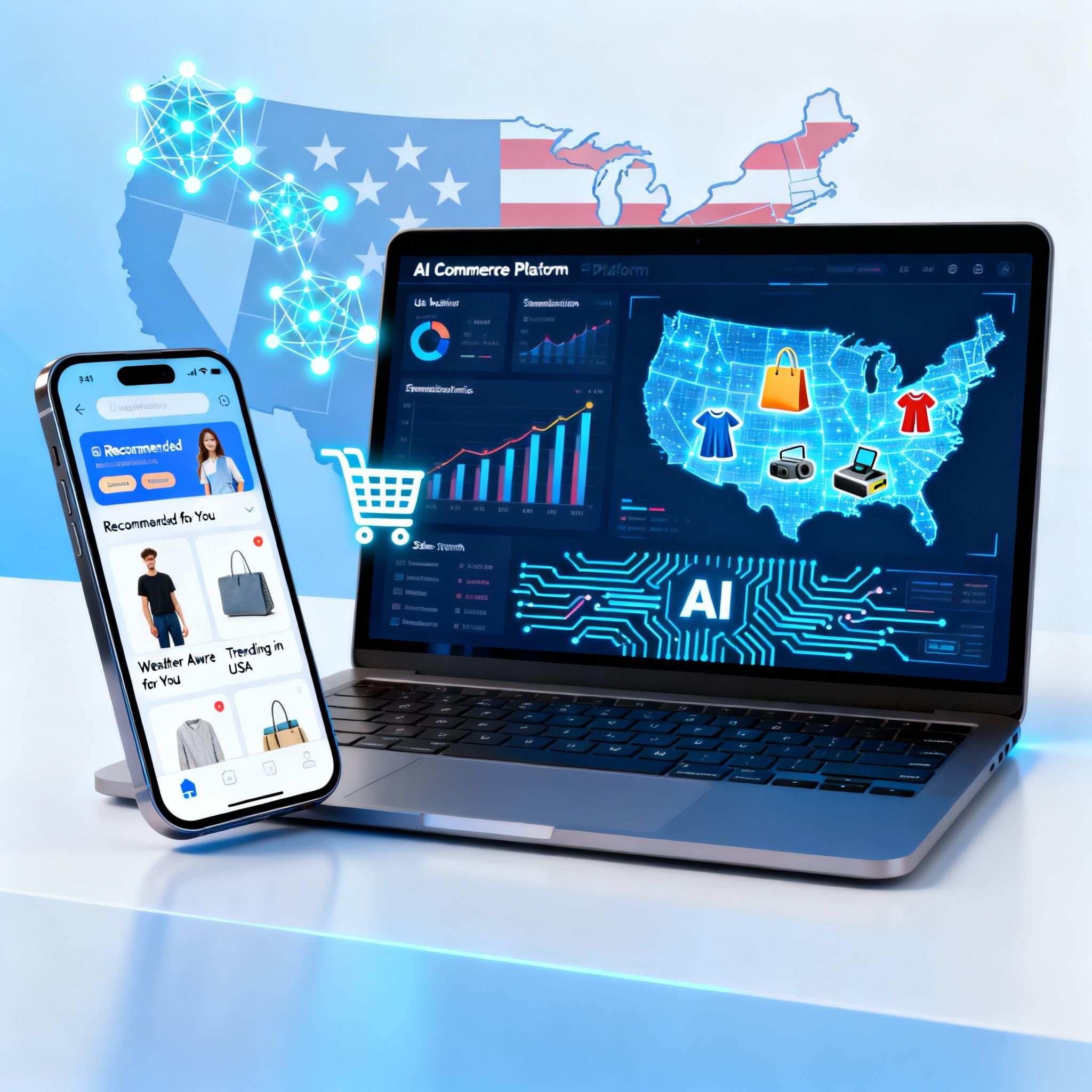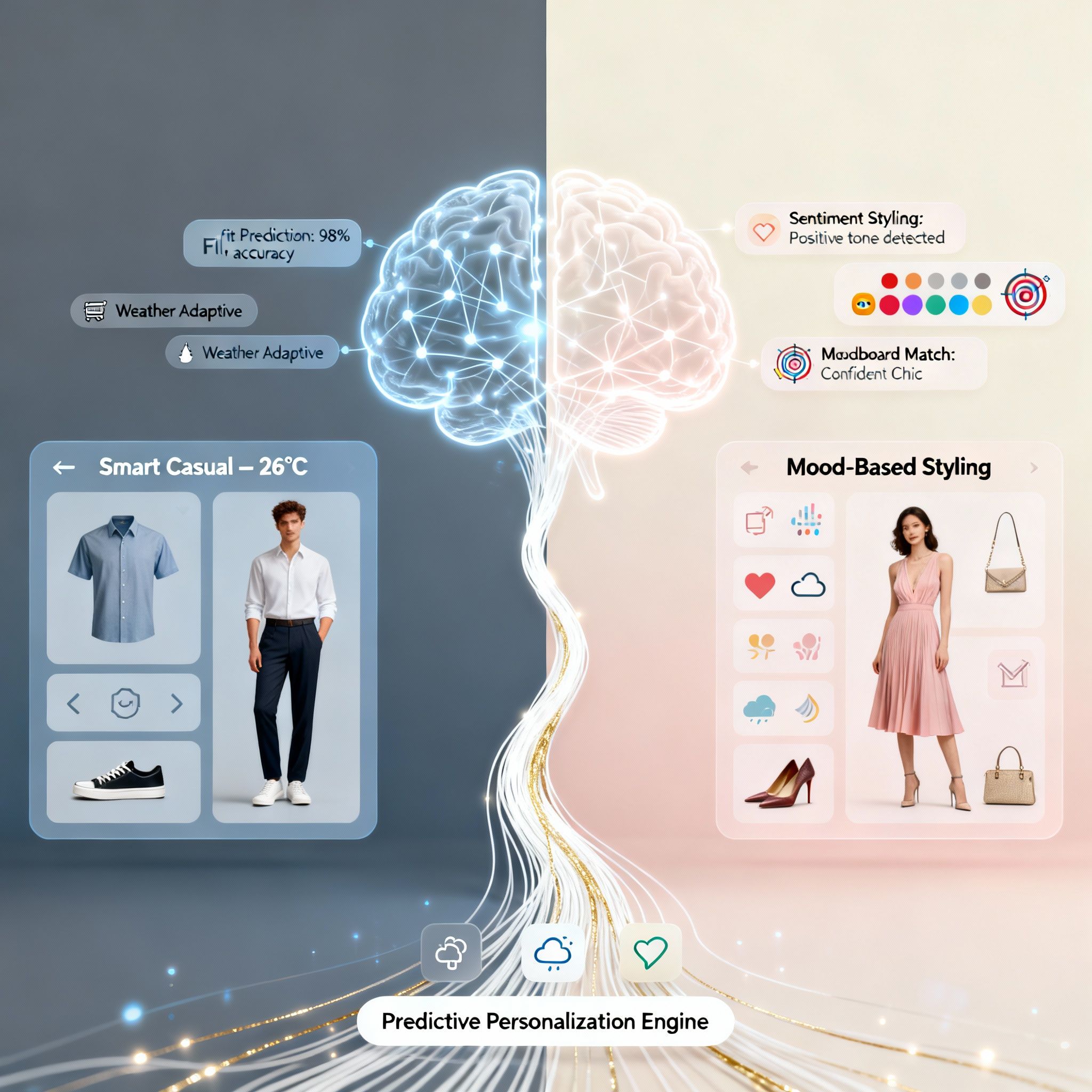How AI Automation is Transforming E-Commerce
AI-Powered Search: The End of Endless Scrolling?


TL;DR
AI product search replaces endless scrolling with precision and personalization. By using machine learning and NLP, it understands intent, curates relevant results, and adapts to user behavior. Platforms like Glance lead this shift with avatar-based try-ons, while Google’s AI-powered search now favors smarter, faster discovery — marking the true end of digital fatigue.
We've all been there: what starts as a simple search turns into a time-sucking loop of endless scrolling. Whether it's finding the perfect pair of jeans, the best budget headphones, or a skincare product that actually works, traditional search engines often fall short. The idea was to make discovery easier. Instead, the sheer volume of irrelevant results has made it overwhelming.
That's where AI comes in. More specifically, AI product search — a smarter, faster, and more intuitive way to get what you’re looking for without getting lost in a sea of links and irrelevant results.
In this blog, we’ll explore what AI product search really means, how it works, what makes it different from traditional search, and how it's transforming everyday browsing and shopping. From fashion to functionality, we’ll also look at real-world examples, upcoming trends, and what it means for the future of your online experience.
Did you know? About 10% of U.S. adults regularly use visual search tools for fashion discovery, with 42% expressing interest but not using it actively yet.
The Problem with Endless Scrolling

Endless scrolling was once seen as a UX innovation. But today, it's becoming a hindrance:
- Information Overload: Irrelevant options crowd out the useful ones.
- Decision Fatigue: Too many choices leave users confused and unsatisfied.
- Reduced Efficiency: Navigating cluttered search results eats up time.
- Lower Engagement: Most users never go past the first few results.
For instance, an average online shopper searching for “comfortable office shoes” may have to scroll past dozens of irrelevant ads, outdated reviews, and duplicate listings before finding a match. Studies like the Nielsen Norman Group report that even though endless scroll aims to enhance engagement, it often reduces content visibility and actionable conversions.
Adoption of AI-powered search and visual tools is highest among younger consumers; older groups (55+) lag in trying these features, with only 5% having used visual search for fashion.
What Is AI Product Search?
AI product search uses artificial intelligence technologies such as machine learning, natural language processing (NLP), and deep learning to enhance search accuracy and relevance. Unlike traditional keyword-based systems, it interprets intent, context, and behavior.
Key Features:
- Natural Language Processing (NLP): Understands conversational and complex queries. For example, you could type “best vegan leather jackets for winter” and get curated options immediately.
- Behavior-Based Personalization: Learns from your past searches, purchases, and clicks to deliver more accurate results.
- Recommendation Engines: Suggests related products or content based on what others with similar preferences have chosen.
- Conversational Interfaces: Uses voice or chat-based systems to hold dynamic, human-like interactions with users.
Think of it like a smart assistant that not only finds what you typed but what you actually meant.
Benefits of AI Product Search

1. Faster, More Relevant Results
AI product search analyzes intent in real-time and narrows down results to what actually matters to you. No more digging through 15 tabs. For instance, if you search "best white sneakers for women," it recognizes preferences based on your previous searches and surfaces top-rated products.
2. Personalized Discovery
It adapts to your behavior, location, device type, and even the time of day. For example, a user browsing at night might be shown sleepwear or night skincare products, while a morning user might get workwear recommendations.
3. Enhanced Shopping Experience
Major e-commerce platforms like Amazon and Walmart use AI to:
- Show visually similar items
- Recommend complementary products (e.g., shoes that go with a dress)
- Provide user-specific bundle suggestions (e.g., a gym outfit + accessories)
This not only boosts satisfaction but also reduces return rates by up to 30%.
4. Reduced Cognitive Load
AI summarizes results, shows featured snippets, and enables voice interactions, helping you make faster decisions with less effort. It reduces mental exhaustion caused by analyzing too many options.
5. Natural Interactions
You can now type or say, "Show me waterproof hiking boots under $100," and get precisely that — thanks to conversational search.
Google’s Shift: From Infinite Scroll to Efficiency
Even Google acknowledged the fatigue. In 2024, it replaced infinite scrolling with paginated results. The rationale? AI can now rank and deliver the most relevant answers at the top, eliminating the need for endless pages.
This shift reflects a wider trend — from volume to value. Instead of endless options, users get smarter choices. Google’s evolution showcases how AI product search is becoming the norm even in information-heavy ecosystems.
How AI Product Search Is Transforming Fashion and Retail
Fashion platforms like Zappos, Nordstrom, and Amazon Fashion now leverage AI to:
- Enable visual search from user-uploaded images
- Personalize outfit recommendations based on past interactions
- Integrate AR for virtual try-ons
Glance, a leading AI-driven shopping and content platform, takes this a step further. Through avatar-based try-ons, Glance lets users visualize fashion on a digital twin, eliminating endless scrolling and boosting confidence in purchase decisions.
Real-world example: If you search for “date night dresses” on Glance, it will not only show you top styles but model them on your avatar with real-time weather, body shape, and trend alignment taken into account.
What This Shift Means for You
- Search Becomes Discovery: You don’t just find products — the right ones find you.
- Smarter Results: Your past behavior shapes future recommendations.
- Less Time Searching: You get to the point faster and shop smarter.
Challenges and Considerations
While promising, AI product search also brings challenges:
- Privacy Concerns: Data collection must be transparent and user-controlled. Clear opt-in options and anonymization policies are a must.
- Bias in Algorithms: If not monitored, AI can reinforce stereotypes or ignore minority preferences.
- Over-Personalization: Users can get trapped in a filter bubble, missing out on diversity and discovery.
- Tech Accessibility: Smaller brands may struggle to implement complex AI systems without scalable and affordable tools.
Example: A small indie fashion label may lack the infrastructure to support dynamic AI systems, leading to inconsistent user experience.
What the Future Holds?
1. Predictive Commerce
AI will soon anticipate needs before you voice them — such as suggesting raincoats before an unexpected forecast based on location.
2. Visual-Voice Hybrid Search
Point your camera at a product, describe what you want, and instantly get product suggestions that match — creating a more immersive search process.
3. Zero UI Interfaces
Imagine searching with gestures, wearables, or voice assistants integrated into your home or car — making search more intuitive and accessible.
4. Real-Time Product Assistants
AI bots will become your digital stylists or personal shoppers — suggesting items in real time during live shopping or social commerce events.
Platforms like Glance are already pioneering these innovations, creating a seamless journey from curiosity to conversion.
Conclusion: The Rise of Purposeful Search
AI product search is not just about speed. It’s about precision, personalization, and peace of mind. As digital clutter continues to grow, users crave streamlined, intuitive, and intelligent search journeys.
Real-life usage shows that when you combine context with cutting-edge AI, shopping becomes more than a transaction — it becomes a tailored experience.
We may not completely eliminate scrolling, but we are certainly entering a new era where searching feels less like digging and more like discovering.
With tools like Glance, Google’s AI evolution, and smarter e-commerce, the future is clear: the end of endless scrolling has begun. And with AI product search, finding what you need is just the beginning.
FAQs
- How does Glance AI help reduce endless scrolling?
Glance offers AI-driven discovery with avatar-based try-ons and personalized product suggestions, eliminating the need to scroll through hundreds of irrelevant options. - Is Google still using infinite scroll?
No, Google reverted to paginated search results in 2024, signaling a shift toward showing the most relevant answers upfront using AI. - Can AI-powered search personalize fashion recommendations?
Yes, AI in fashion uses purchase history, style preferences, and even images to offer curated recommendations and virtual try-ons tailored to individual users. - How does AI improve the search experience?
AI enhances search by providing faster, more relevant, and personalized results using real-time data, predictive algorithms, and conversational interfaces.






